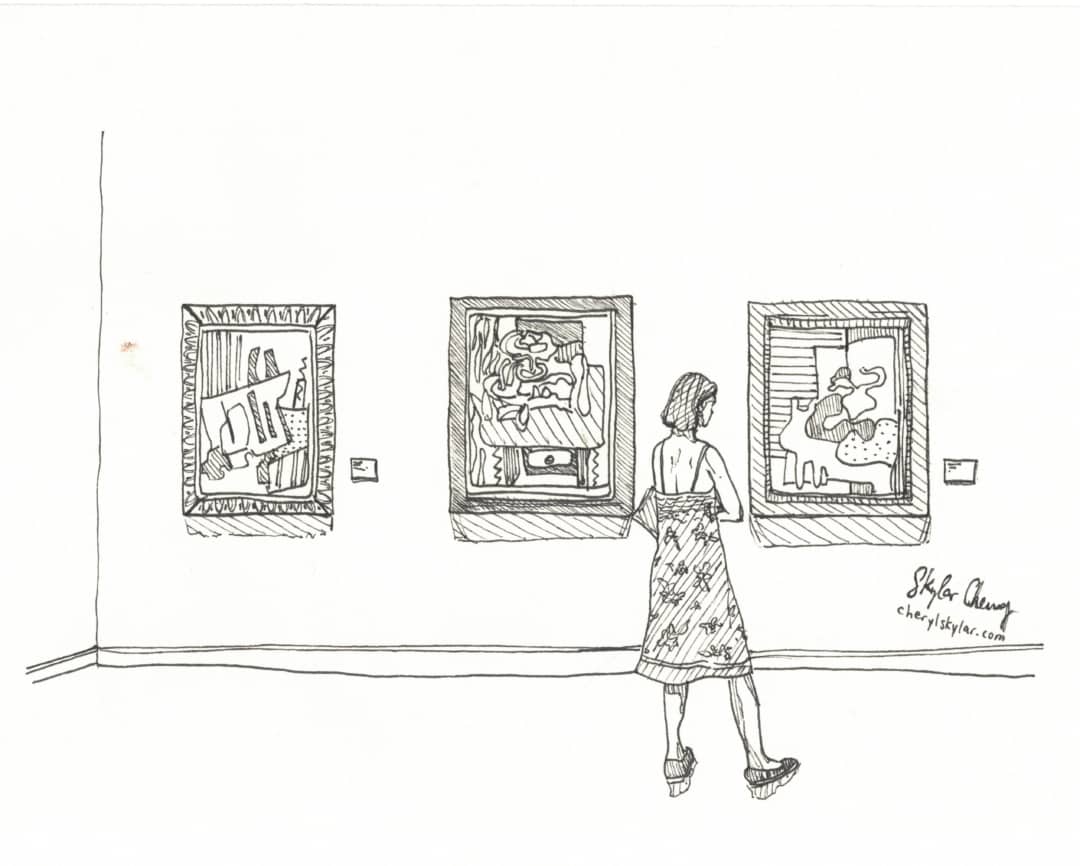The Blackwood Gallery in Mississauga is currently hosting Miruna Dragan’s When Either But Not Both Are True. The exhibition reflects an artist’s exploration of the relations we hold with the world around us, as well as the way our beliefs shape these relations.
Dragan explores the limits of knowledge vis-à-vis the unknown with allusions to spirituality and logic systems, addressing fundamental questions of harmony, representation, and epistemology.
Entering Dragan’s display is a sensory overload — bright hues of reds and blues advance to meet the viewer against a churning backdrop of grey. The traditional blending with the contemporary, sharp lines beside soft contours; juxtaposition upon juxtaposition, opposition followed by opposition; all in all, a seemingly chaotic mess.
Once viewers recover from the initial confusion, accept the lack of understanding of the objects in the surroundings, and gather the courage to approach the display and consider what’s before the eyes one entity at a time, then the initial discord will slowly begin to fade.
The individual pieces greet the viewer by presenting a landscape of their own. From afar, as the viewer takes in the space as a whole, they cannot help but feel the presence of a great emptiness, that of alienation from theenvironment, as humans maintain their distance and consider it from a rational, or perhaps theoretical, perspective.
On the far left, a glimmering box rests on the floor before a tapestry, upon which four blue petals embedded with logic symbols find themselves surrounded by Suminagashi patterns inked on rice paper; all of this isagainst a softly textured salt wall. The allusion to the natural world is obvious. However, the underlying presence of the supernatural, reflected by Eastern symbolism, light, and water, highlights the presence of an additional dimension to perception; this can only be achieved by rekindling our relationship with our environment.
A few steps to the right, there is a more pronounced contrast between the vivid geometric patterns and the soft backdrop, further establishing the lack of harmony between reason and spirituality. Yet this also hints that our understanding of both the physical and the metaphysical are ultimately part of a whole, despite superficial disparity.
When Either But Not Both Are True seems to reflect a return to the tradition of Romanticism, through its focus on the lack of unity and spirituality in contemporary society, as well as the emphasis pon the importance of our environment. Likewise, its appeal to Eastern philosophy, which challenges what we know of conventional, Western logic, encourages an acceptance of chaos as a part of a greater whole.
The infinitely expandable rhizomatic tree resting in a corner attests to the above. The rhizome can be understood as a symbol of resistance from traditional linear organizational structures; there is no beginning or end and everything is united. This addresses our current framework of knowledge and understanding, according to structured hierarchies, and considers the natural world through a network of multiplicities.
Ultimately, we are asked to re-evaluate not only our relation to nature, but to question the very foundation of our beliefs.


